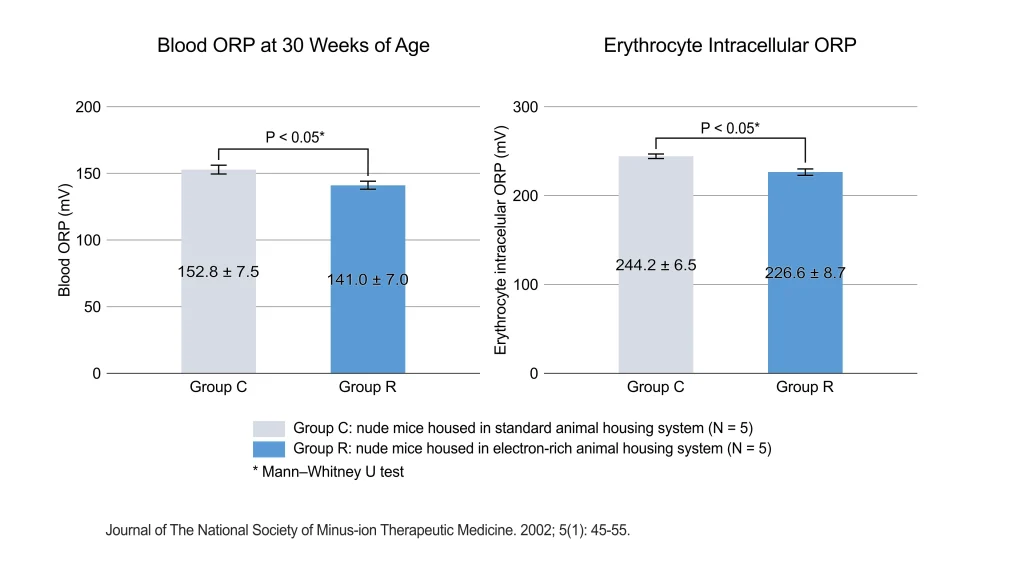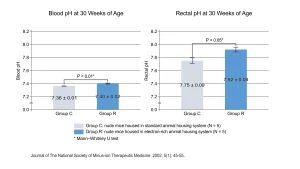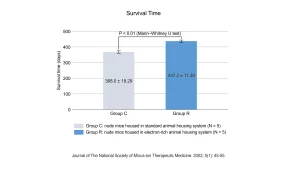In nude mice at 30 weeks of age, blood and erythrocyte intracellular ORP in Group R were statistically significantly higher than in Group C.
This suggests that the Electron-Rich housing conditions of Group R suppressed the oxidative stress in the bodies of nude mice.

As stated in “The Implications from the Above” in the following Related Article, it was thought that aerobic energy metabolism was more promoted in Group R than in Group C.

ROS generated in mitochondria during aerobic energy metabolism is known to cause apoptosis. In addition, ROS generated in mitochondria during aerobic energy metabolism is the largest source of ROS in the body. Oxidative stress is known to be the main cause of aging and also a cause of various diseases. For these reasons, enhancing energy metabolic efficiency by promoting aerobic energy metabolism is not necessarily considered advantageous for extending survival time.
However, as shown in the related article below, the survival time of nude mice in Group R was longer than that of Group C. Additionally, unlike the mice in Group C, the mice in Group R did not exhibit any pathological changes in their appearance at the time of death.

From the above, it was thought that the reduction of ROS in the Electron-Rich housing conditions of Group R may be helpful in both enhancing energy metabolic efficiency and extending survival time.
